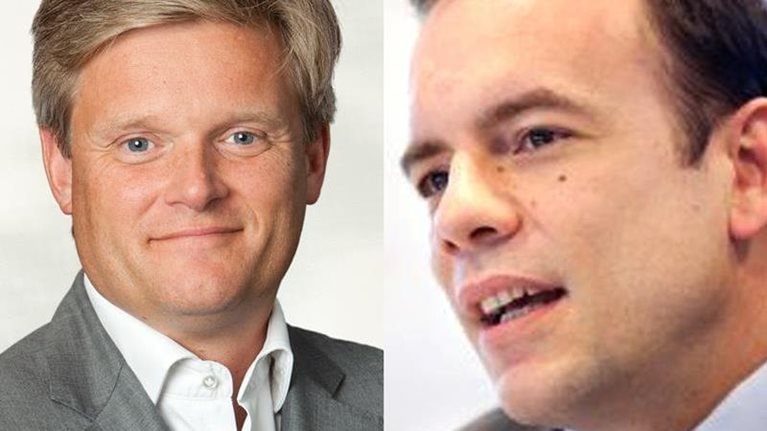Congratulations! Your organization is performing at or near the top of its game, or it has been in the recent past. Perhaps even better, you have a strategy to improve in the near future. Now for the bad news: the good news won’t last.
Stay current on your favorite topics
It can’t—at least without the right kind of organization. Across industries, barely half of the top performers sustain their leadership position over the course of a decade, according to research by our colleagues in McKinsey’s Strategy Practice. The challenges in maintaining dominance are not new; even sectors that digitization has not consigned to oblivion have seen flagships such as Delta Airlines, General Motors, and Owens Corning move from the top into Chapter 11 and then back into leadership positions again.
But of course, technology is changing everything. As digitization, advanced analytics, and artificial intelligence (AI) sweep across industries and geographies, they aren’t just reshaping the competitive landscape; they’re redefining the organizational imperative: adapt or die. The average large firm reorganizes every two to three years, and the average reorganization takes more than 18 months to implement. Wait and see is not an option; it’s a death sentence.
As a result, companies are beginning to experiment with increasingly radical approaches. We’re struck by a commonality among those who get it right: they create adaptive, fast-moving organizations that can respond quickly and flexibly to new opportunities and challenges as they arise. In doing so, they’re moving intelligent decision making to the front lines. That’s in sharp contrast to the standard, “safer” modus operandi of capturing data, sending it up a hierarchal chain, centrally analyzing it, and sending guidance back. Several of these forward-thinking organizations now starkly describe their decision making as being pushed to the “edges”—to and beyond employees, past the organization’s four walls, and out to consumers and partners. The process functions more like a network and less like a chain of command.

In this article, we’ll share these emerging elements of the organization of the future. While there is no set formula for success, we’ve seen versions of these elements at so many companies that we think they provide at least the organizational outline to win (Exhibit 1). Along the way, we’ll try to dispel some common misconceptions (too risky! too inefficient! too time consuming to set up!) of what such an organization really means. We know you don’t want your company to undergo yet another reorg—and another one a few years after that. Consider this a road map out.
The urgency imperative
A good road map can come with callouts and suggestions, and here’s our first: floor it. When you compete in a marketplace that moves so quickly, the default outcome is to fall behind. If your organization is to have any hope of keeping up, it will need to be reconceived as fast, quick to turn, and even quicker to emerge from rapid pit stops and tune-ups. One could almost analogize to a race car—almost, because race cars typically run on a fixed track toward a clear finish line. Your organization’s race, by comparison, is toward an unknowable destination. And that race doesn’t end.
Worship speed
At the highest-performing companies, speed is the objective function, the operating model, and the cultural bias. And more: speed is an imperative. Walk the halls of leading organizations, and you’ll repeatedly hear catchphrases such as “energy,” “metabolic rate,” “bias for action,” and “clock speed.” Jeff Bezos, in his April 2017 letter to Amazon shareholders, highlights making not just “high-quality” decisions but “high-velocity” decisions. They go hand in hand. “Most decisions,” writes Bezos, “should probably be made with somewhere around 70 percent of the information you wish you had. If you wait for 90 percent, in most cases you’re probably being slow.” Choosing not to fail fast comes at a price. “If you’re good at course correcting,” Bezos continues, “being wrong may be less costly than you think, whereas being slow is going to be expensive for sure.”1
Would you like to learn more about OrgSolutions?
Shift to emergent strategy
Tacking and readjusting quickly are essential, even if the destination is uncertain. In fact, because the destination is uncertain you need an “emergent strategy,” which entails a relentless quest and not a defined end point. The pursuit itself should be a firm’s North Star—a questioning of “how do we add value” that’s unceasing but also unsolved, open to exactly how that manifests in terms of specific opportunities and actions.
Too often, decisions about how to create value are made from on high and tend to be “one and done.” They’re implemented by means of top-down planning, frontline execution, frontline reporting back up the ladder, top-down analysis of gaps, top-down replanning and pushing down mandates to fill those gaps, frontline reexecution, and repeating it all again—a process much too slow and mechanistic to keep up with real-world change. That’s particularly the case in organizations with a number of “clay layers” of middle management, where officers feel compelled to add value by refining, augmenting, synthesizing, piling on, micromanaging, and adjusting information that passes their way—and where personal incentives and cognitive biases inadvertently give rise to hockey-stick forecasts, sandbagging, and poor decision making.
Our colleagues in McKinsey’s Strategy Practice have just written a book, Strategy Beyond the Hockey Stick (Wiley, 2018), about how to tame this “social side” of strategy. By understanding the real odds (long) of breaking out from the pack, by making a consistent series of big moves, and by treating these steps as a journey that doesn’t end, they show that companies can make strategic breakthroughs. (For more, see “Strategy to beat the odds.”)
Such an approach requires an organizational platform that allows for an emergent mix of multiple strategies to be formulated and carried out in real time. If the old world was a master composer like Mozart, planning every detail for every instrument, the new world is improvisational jazz. But even older cats can jam. One global chemical manufacturer, for example, had originally been conceived, decades ago, to commercialize a singular scientific breakthrough. When challenged, decades later, to dig deeper into how the company had actually realized high returns after its founding period had passed, leadership discovered that the business’s biggest moneymakers were consistently the result of incremental, close-to-the-customer applications. Many of those value-creating innovations had sprung from learning by doing, improvising, and improving—and getting by on a shoestring. In fact, upon further analysis, the company realized that it had been starving incremental (but high-impact) innovation for the new New Thing, with poor returns on investment too often the result. Grasping that insight, leadership decided to flip its resource allocation almost completely. That fundamental shift, hitching its star to emergent strategy, has since generated outperforming value for more than a half dozen years.
Agility
The principles behind organizational agility have been around for decades. In its current, most mainstream form, agility is a DevOps description of how IT teams form to address problems, sprint toward solutions, and then reconstitute to work on new challenges. These approaches have made “agile” practical and concrete, and they’ve given rise to broader applications yielding transformative impact across an entire enterprise. Much like agile software development helps meet the challenge of producing an application that is already obsolete when finally launched, enterprise agility helps solve the problem of an organization’s strategies, resources, structures, and capabilities being obsolete by the time they’re finally operational.
Organizing for urgency calls for organizing differently (Exhibit 2). The urgency imperative places a premium on agility: it enables the shift to emergent strategy, while unleashing your people so they can reshape your business in real time. It’s also a powerful means of minimizing confusion and complexity in our world of rapid-fire digital communications where everyone can talk with everyone else—and will, gumming up the works if you don’t have a sensible set of operating norms in place. Agility is also the ideal way to integrate the power of machine-made decisions, which are going to become increasingly important to your fundamental decision system.

Unleash decision making
In a competitive environment that’s changing so rapidly and so profoundly, can any single individual keep up? Not in isolation, and certainly not from the top down. But the right kind of organization—one that taps into a network of individuals, recognizes the outperformance and resilience that a diverse workforce will provide, and deploys technology aggressively and purposefully—can.
To understand how, tap into your own decision system—the human brain—and consider how people actually decide. While neuroscientists can identify specific parts of the brain that are more active under certain circumstances, it’s never the case that one discrete neuron, alone, is determinative. Rather, intelligence is an emergent property of the whole system, and every person’s “decision system” is a network of multiple, small, iterative processes honed naturally over time.
That’s not to say all decisions are created equal; they are anything but, and a failure to categorize often contributes to inefficient or ineffective decision making. In our experience, the best way to understand decisions is to conceive of them as part of a four-category taxonomy. The highest level of decision making, we’d submit, comprises the decisions about how to decide. Call this meta–decision making “greenhouse design.” It involves choosing the foundational elements—the structures, governance arrangements, and processes—that define how your organization operates and reflect its core value proposition. This platform, in turn, supports looser, more dynamic elements that can be adapted quickly in the face of new challenges and opportunities. The CEO is absolutely essential for this organizational “platform definition,” which is why some leading executives describe themselves as “gardeners,” “city planners,” or “architects,” rather than “operators” or even “strategists.”
The second category of decision making is “big-bet decisions.” These infrequent and high-risk decisions have the potential to shape the future of your company. Examples include major acquisitions and game-changing capital investments—both high stakes and inherently risky. Organizations that do well in this decision category focus not only on debiasing but also on designating a single executive sponsor, atomizing decision components into identifiable and more easily solvable parts, standardizing a decision-making approach, and moving as fast as possible. Time, after all, is of the essence.
Less conspicuous but still high stakes are determinations in a third category: “cross-cutting decisions.” These often look like big decisions but are actually a series of smaller, interconnected choices made by different groups and individuals as part of a collaborative, end-to-end decision process. Such decisions include pricing, sales and operations planning (S&OP), new-product launches, and portfolio management. These types of determinations are necessarily cross-functional and often highly iterative. The challenge is to bring together multiple parties who often have different priorities, so they can provide the right input at the right time, without bureaucratic watering down.
The final category is made up of determinations that are pushed out to the edges of your organization. These are the “delegated decisions” and “ad hoc decisions.” Delegated decisions are high frequency and low risk (in other words, even if long-term impact is high, bad decisions can be undone or corrected long before significant consequences arise). They can be handled effectively by an individual or a small natural working team, with limited input from other parts of the organization. Such decisions also increasingly can be delegated to algorithms (think instant recommendations on YouTube or route planning at UPS). Ad hoc decisions are less frequent but still low stakes; they arise unexpectedly, but frontline employee judgment should be supported by more senior managers through an ethos that Jeff Bezos calls “disagree and commit” and Zappos’s Tony Hsieh encourages as “safe enough to try.”
Reimagine your structure
The more interconnected your organization, and the more that decision making can be diffused, the easier it will be to sustain high performance in a world of uncertainty, speed, and disruption. Accelerating, unpredictable, and shifting currents of information are precisely not what a tall command chain is designed to confront, especially in a turbulent external environment. Those dynamics can render your firm’s advantages in numbers, tools, and training irrelevant. That’s a key reason why even the most hierarchical chain of command—the US military—moved to decentralize decision authority to help beat back Al Qaeda’s Iraqi-based forces.2
Of course, hierarchies will continue to exist, and it’s right that certain functions (think risk management, legal, treasury) should be centralized. In a world growing more complex by the moment, there are compelling reasons for strata of specializations and subspecializations—the very sort of dedicated expertise that should be teamed for what we’ve described earlier as cross-cutting decisions. “Flattening,” without more, is not a comprehensive fix.
What does work is to free your initiatives and decisions from the constraining hands of unnecessary hierarchy. While some level of prioritization and resource allocation must be coordinated centrally, many actions and decisions are best taken where the work is done at the front line, close to the customer. To pull that off, eliminate superfluous management levels, decouple decisions from control, and let go.
That calls for getting serious about letting your sensors, machine and human, work their shared mojo as information providers and decision makers. The human element is not a feel-good add-on. Winning organizations—from the 2017 World Series Champion Houston Astros, who value player “heart” and talent-evaluator intuition, to Zappos, whose passionate customer-service agents have cultivated a passionately loyal customer base—are analytics powerhouses, but they rely on inspired individuals to outpace the competition. These organizations have also figured out that flatter makes it much easier to operate in agile ways, to speed information along, and to integrate disparate sources of it in ways that boost the odds of making decisions that serve the interests of the company as a whole, not just of isolated, self-interested cells.
Capability
In order to operate with urgency and pursue the agility that makes high performance possible, you’re likely going to have to fill some serious capability gaps along the way. What’s more, many of the critical skills your people need—as individuals, team members, and leaders—are changing rapidly as a result of workplace automation and AI. As less complex work becomes increasingly automated, workers will need to be able not just to perform in concert with machines but also to adapt to uncertainty. And the more that information-rich tools are used (and the more effective they become), the harder it will be to achieve the proper balance between person and machine—a challenge that amplifies, in turn, the importance of continuous learning, employee development, and consistent leadership.
Personalize talent programs
When direction comes primarily from “the boss,” your company will need more bosses to keep on course. That’s one reason so many organizations are too tall and bureaucratic. But if capabilities bubble up from within, and learning is personalized for individuals and not the masses, employees can act more urgently and, usually, more effectively.
Fortunately, organizations are gaining new tools—especially in people analytics—that will enable them to manage and develop their people with greater precision than ever before. Examples include a fast-food restaurant chain that, after extensive testing, was able to identify and teach behaviors that would inspire colleagues; rigorous research and statistical analyses used by Alphabet to inform (but not replace) its engineers’ human judgment about people decisions; and, in the case of one insurer, identifying which employees would benefit most from which types of learning opportunities.
Rethink your leadership model
Central to talent development is a company’s leadership model. Leadership can come from anyone, not just from those in positions of formal authority. Think about your own firm: sometimes an employee can be a leader and sometimes a follower, because while no one employee knows everything, many are likely at the leading edge of something. What’s more, leaders in agile organizations lead less by control than by influence. In one workshop we frequently conduct, we ask executives how they would solve a given issue. Most are direct—they identify the problem and then fix it. A smaller group will drill down to the problem’s root cause and fix that instead. Only a very few take a more holistic approach; they consider how to create the conditions in which an ecosystem can be largely self-managing, where individuals and tools can learn and problems can be avoided before they manifest.
This, we believe, is what the urgency and uncertainty of the competitive future will demand. The traditional model of a charismatic leader who gets results by force of will has long proved expensive and is fast becoming outdated. Leaders should strive, instead, to empower the organization as a whole, to be felt but not seen, to be inspiring but not indispensable—and not to insist that everyone else should be just like them. Such leadership rests on the ability to adapt and on congruence with the essence of your organization.

Organizing for the future
Identity
All of which leads into a fundamental challenge for urgency: If you build this kind of “control light” organization, and it’s moving that fast—how do you keep your bullet train from running off the rails? Our research shows that speed needs to be channeled into stable processes, tasks, and roles if you’re going to stay healthy as you move quickly. Realistically, lots of those sources of stability are going to get upended by workplace automation, as we’ve noted before. As well, operating with the urgency and agility we’re describing, and overhauling organizational capabilities constantly to keep and exceed competitive pace, can seem unsettling. And resource reallocation plainly changes people’s lives. It’s hard, therefore, to keep your organization pulling together when there’s so much ambiguity, so much shifting around, and too little sense of why.
Adopt a recipe to run the place
While there’s no pat answer to this uncertainty, following a clear recipe is an effective way to start. By its very definition, a recipe is a defined set of conditions and constraints. In siloed firms, one sees a wide array of processes and practices, executed in dramatically different fashion across the organization (and sometimes within the same silo). It makes for an incongruous hash, with ingredients from management books over the last 20 years—a pinch of this and a dash of that.
By contrast, the healthiest firms—those most capable of sustaining performance and renewing over time—have a much simpler approach: they don’t sample à la carte. Our research shows that four distinct recipes are particularly effective, and having the discipline to stick with any one of them is critical. In fact, organizational discipline is one of the foundations of both corporate health and operational performance.
Nor are “health” and “operational results” binary choices. To keep from losing their way, organizations must prioritize both at all times. That adds up to a virtuous cycle that accelerates and enhances performance, even for fairly mundane initiatives such as squeezing a bit more margin from better pricing or lowering costs through more effective procurement. It also helps ground the company and the people who comprise it, even in times of momentous change.
Cultivate purpose, values, and social connection
If you conceive of your organization as more than just a collection of roles and processes, you’ll be far more prepared for the uncertainty ahead. Aligning around common principles is a large part of what an organization of the future is all about: participants making decisions under defined rules of engagement, collaborating to create value, and earning the credibility to lead rather than having “leadership” be imposed from on high.
Employees reach higher when their energies are channeled toward a higher purpose. Because different people find inspiration from different sources, it takes range to strike a chord that will resonate with almost everyone. Smart organizations hit every note—and mean it. That calls for walking the talk in, among other areas, race and gender diversity, social impact, and diversity of political expression. Some employees are most inspired by personal development (and, it must be said, monetary compensation); others find passion in objectives geared more toward their working team, the company as a whole, its customers, and even society at large. Cultivating purpose requires you to sharpen your organization’s sense of mission and strengthen your employees’ social connection.
There’s an old quip that “everybody talks about the weather, but nobody does anything about it.” With reorganizations, it’s too often the reverse: everybody does a reorg, but nobody likes to talk about it. That’s because reorganizations are hard to get right, distract everybody from senior leadership on down, and have real consequences for meeting investor expectations. And even if you’re game for continual top-down revisions, mantras such as “The only constant around here is change!” run the risk of bewildering employees.
Ironically, shifting to urgency can stave off the ceaseless reorganization cycling. In the face of today’s massive disruptions, an ethos of urgency actually serves to smooth gyrations between “hurry up” and “settle in.” Of course, urgency alone can also be a recipe for dysfunction. But combine urgency with agility, capability, and identity, and you’ve got an organization that can play fast and long. The future will be both.


